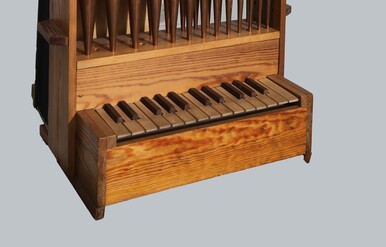In 1941, six trains with equipment and more than one and a half thousand employees of the evacuated Vladimir Gramophone Factory arrived in the city of Molotov. Evacuees organized the production of ammunition in Molotov. By 1944, the new plant was the only one in Russia to provide fuses for shells of various calibers for field artillery.
The production of musical devices stopped during the war and resumed only in 1946. The revival of these cultural leisure products was not an easy process. Most of the previously evacuated employees returned to Vladimir, and Molotov experts had to establish the production almost from scratch: master the technique of die casting, component production and grinding, and much more. Nevertheless, in April 1946, the new Molotov Pathephone Factory produced the first batch of one hundred pathephones.
The next year, the output increased to 10,000 devices, but local pathephones were not in great demand. It took several years to optimize the technological process.
Engineers constantly improved the design of the pathephone, striving to create a device that would be compact and convenient for use in any conditions. The displayed small-sized pathephone was nicknamed “traveling”, “hiking”, or “beach” pathephone, proving that the manufacturers managed to achieve their main objective.
The pathephone can be disassembled completely: in the lower part of the device, there is a winding crank handle, while the grooves in the upper part house the pickup, disk, and speed regulator. The tonearm (the lever supporting the cartridge that holds the stylus) is placed in the sliding base. Despite its small size, the device could be used to play records of any size. One of the advantages of the gramophone was the wear-resistant sapphire stylus that served for quite a long time.
The year 1954 was marked by the production of over
one million Molotov gramophones, not counting the number of styluses. However,
the era of pathephones was coming to an end, and two years later, the factory
was repurposed to produce bicycles.





